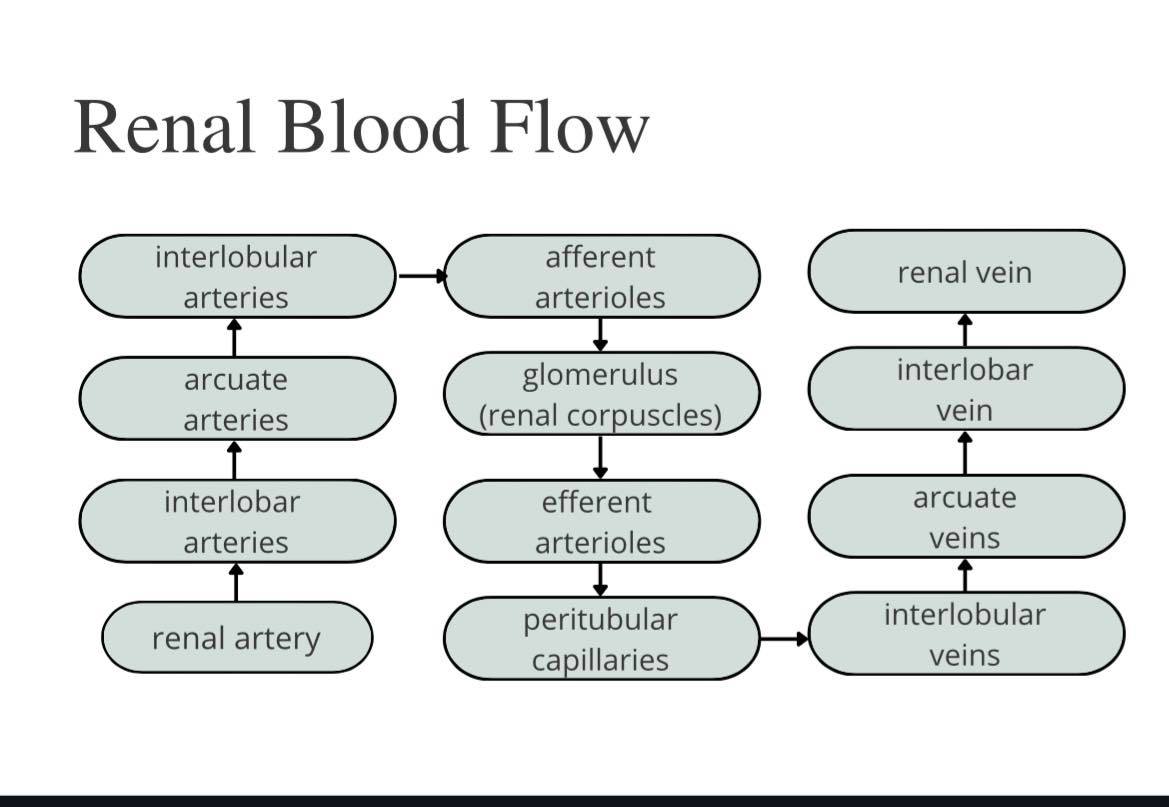Study Set Content:
the study of the physiology of the kidney.
renal physiology
each of a pair of organs in the abdominal cavity of mammals, birds, and reptiles that removes waste and extra fluid from your body.
Kidney
where does kidney located?
lower lumbar region
kidney needs continuous blood supply from
renal artery
its principal function is to remove toxins from the blood plasma and eliminate them from the body in the form of urine.
urinary system
functional unit of the kidney
nephrons
how many nephrons are found in each kidney?
approx. 1 to 1.5 million
2 kinds of nephrons
Cortical and juxtamedullary
make up 85% of total nephrons. reabsorb waste products and nutrients.
cortical nephrons
make up 15% of total nephron. it concentrates urine.
juxtamedullary nephrons
nephrons contribute to the main functions of the kidney by
Glomerular filtration, tubular reabsorption and tubular secretion
Renal blood flow

is the efferent arteriole bigger than the afferent arteriole?
Select the Correct Answer:
final adjustment of urine
distal convoluted tubule
reabsorption of essential substances
proximal convoluted tubule
maintains osmotic gradient (salt concentration) in the medulla. are adjacent to the LOH in juxtamedullary nephrons
Vasa recta
total renal blood flow
1200 mL/min
is a tuft of capillaries whose walls are made up of 3 layers. located within the bowman's capsule and is a non selective filter of plasma substances with molecular weight of
Glomerulus
is substances with molecular weight lesser that 70,000 able to pass through the glomerulus?
Select the Correct Answer:
3 layers of glomerulus
capillary endothelium, basement membrane, podocyte epithelium (viscera of bowman's capsule)
